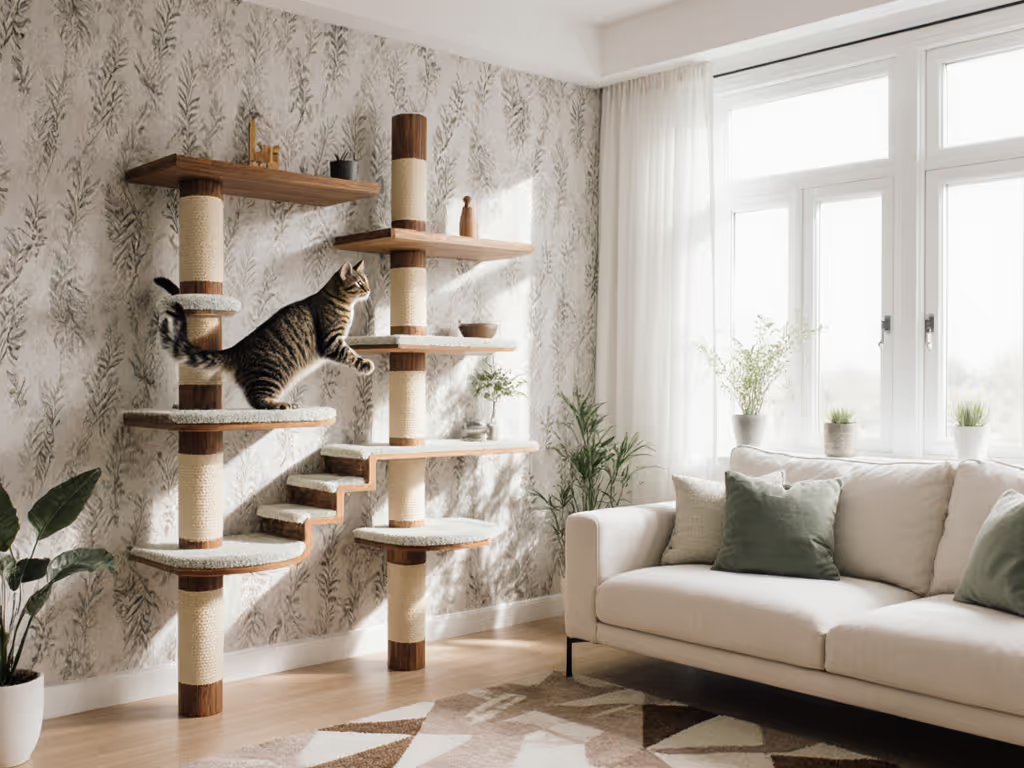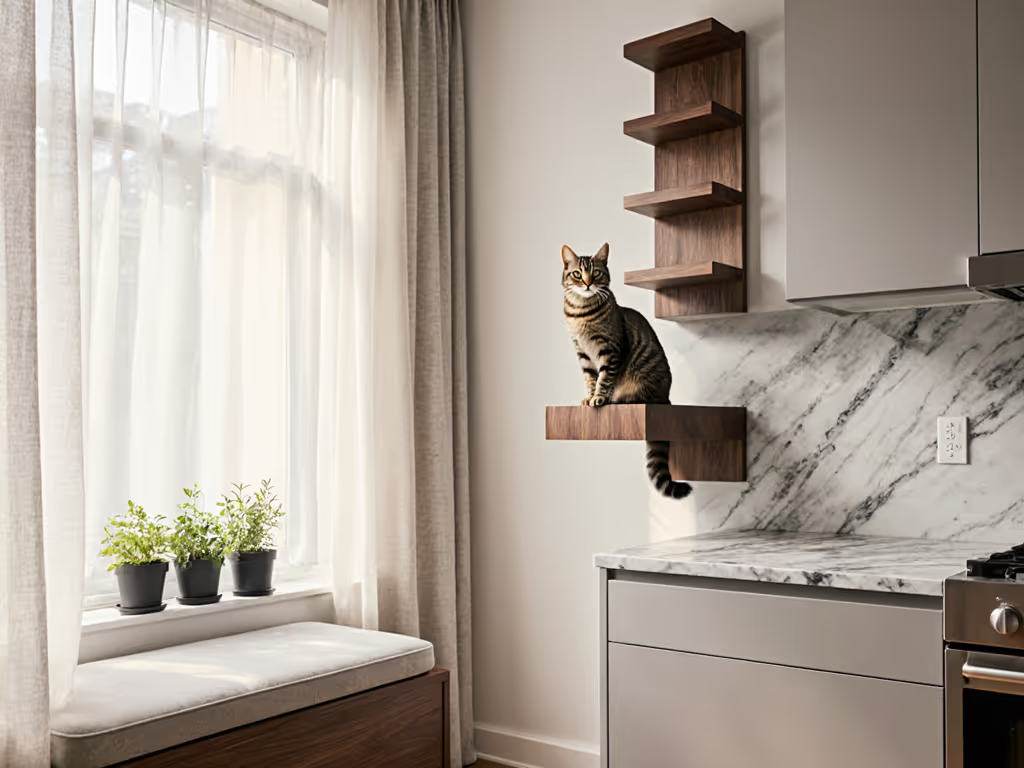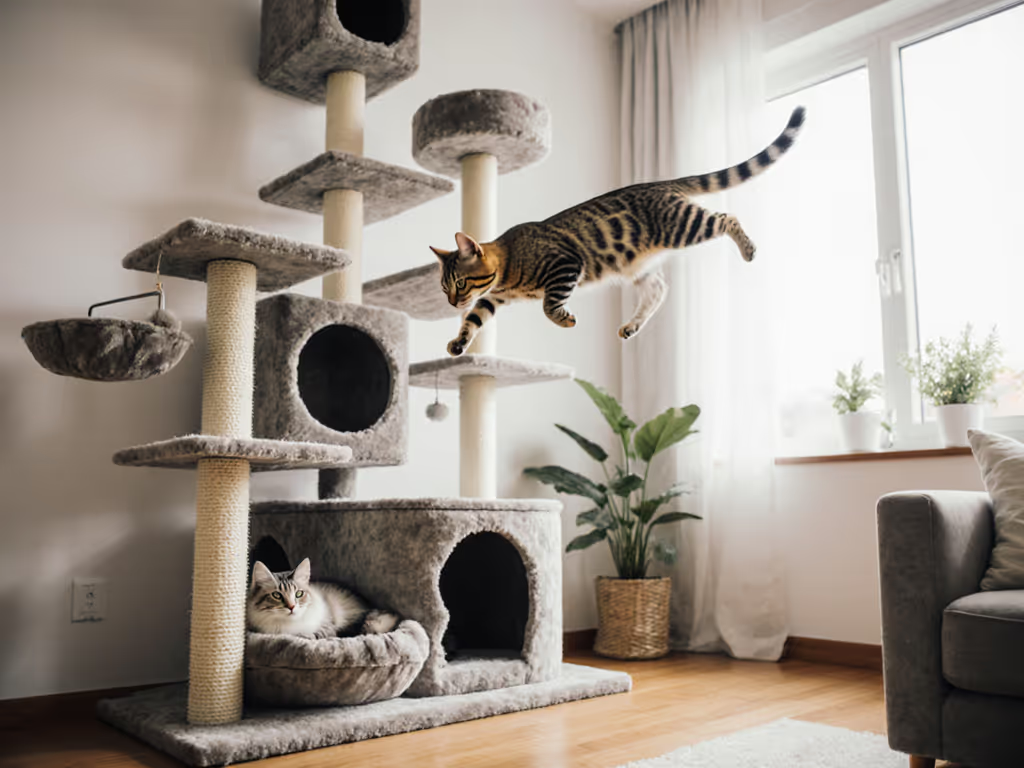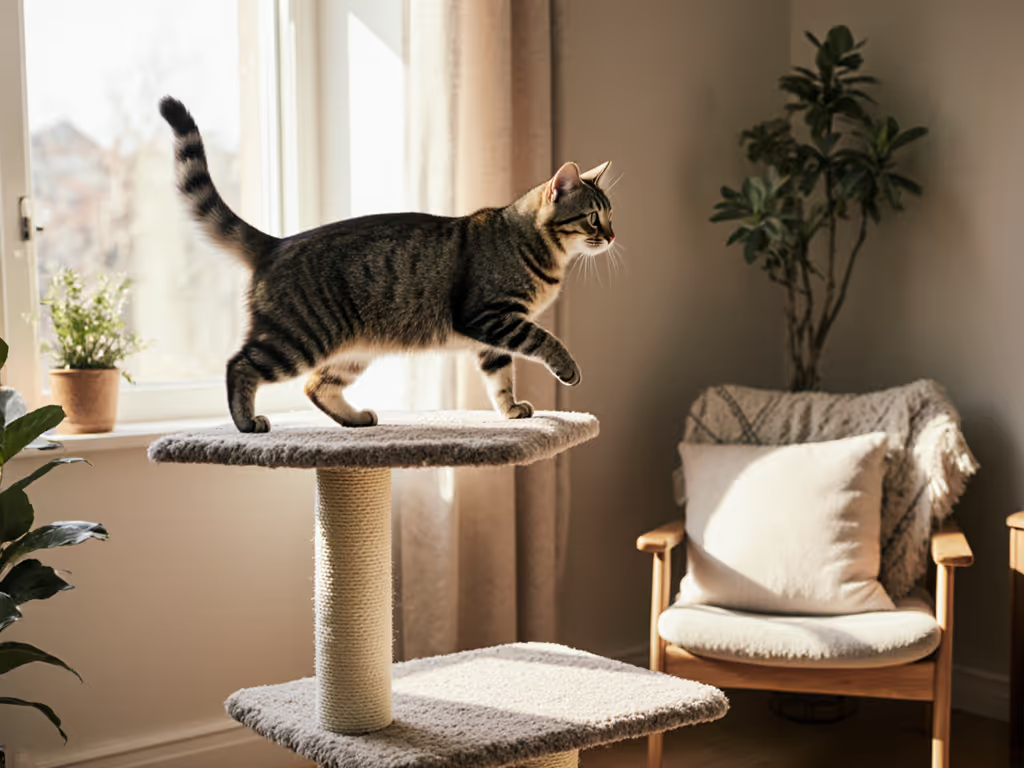
Unique Cat Furniture for Your Home Style
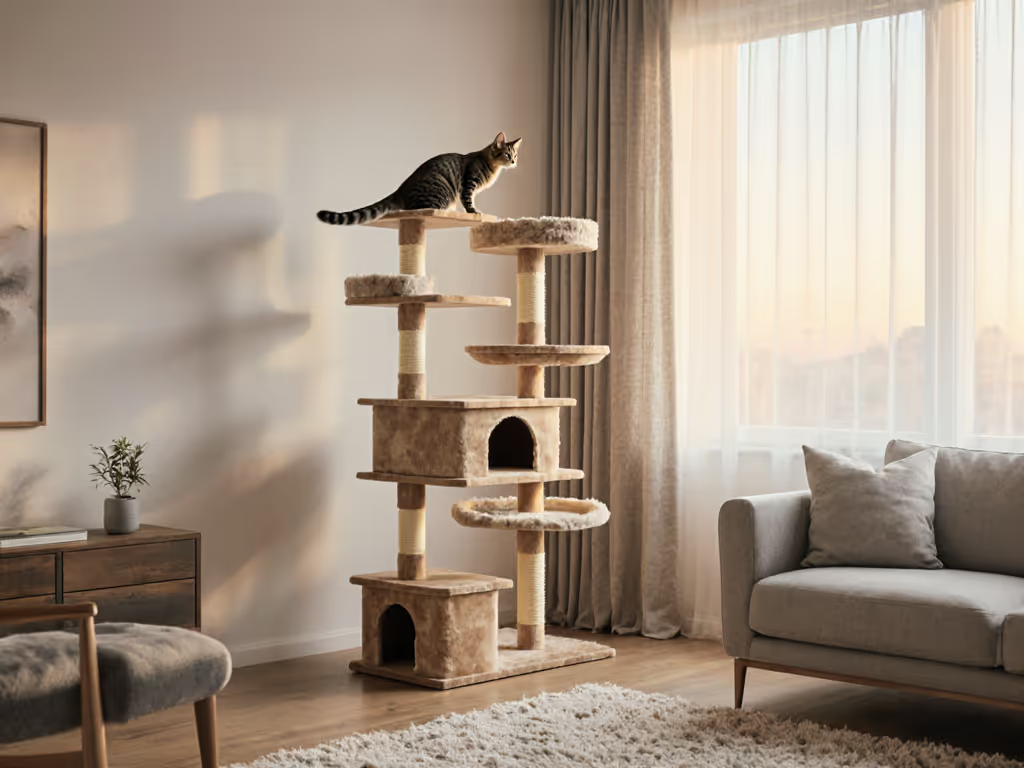
Gentle adjustments transform tension into tranquility, that's what I've learned watching shelter cats like Miso finally stretch upward once their space speaks their language. When seeking unique cat furniture that harmonizes with your home, remember: true solutions answer your cat's silent requests for safety, exploration, and control. Forget forcing your feline into human-centric designs. Instead, prioritize behavior-first choices that honor their instincts for choice, vantage points, and retreats. Today's market blends aesthetics with purpose, turning cluttered eyesores into integrated sanctuaries where unique cat furniture supports your cat's wellbeing without sacrificing your style. Let's unravel how to select pieces that create peace for both of you.
Why Your Cat Ignores "Perfect" Beds (And What to Try Instead)
That fluffy bed you lovingly placed in the sunbeam? It likely fails two critical needs: sensory security and strategic positioning. Cats avoid exposed resting spots because they feel vulnerable, especially in homes with foot traffic, other pets, or sudden noises. A bed lacking enclosure or height access ignores their instinct to observe without being seen. I once worked with a guardian whose cat napped exclusively in a kitchen drawer. The solution wasn't another bed, but a covered platform placed above her desk, just like Miso's journey from his carrier to a perch. The key? Choice reduces conflict.
When cats feel safe choosing where and how to rest, stress behaviors vanish.
What to Do:
- Elevate privacy: Place a lidded condo or cave-style bed on a stable shelf (minimum 36" high). Cats feel safest when they can survey rooms from above while having an escape route.
- Layer scents slowly: Rub bedding with your cat's cheek glands (via a soft cloth) before introducing it. Avoid strong cleaners or perfumes on fabrics.
- Test multiple zones: Place compact beds near high-activity areas (like your home office) AND quiet retreats. Track usage for 7 days to identify preferences.
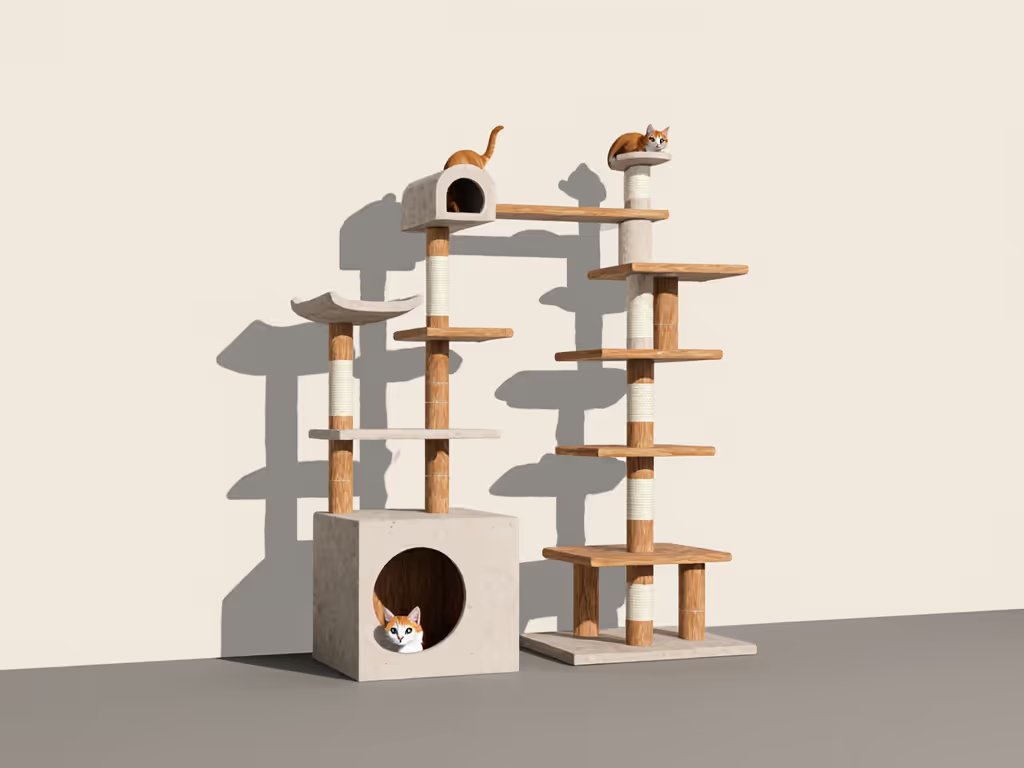
Can I Save Space and Satisfy My Cat's Instincts?
Absolutely, verticality is your space-saving superpower. Most cats prefer upward movement over horizontal sprawl, yet 83% of indoor cats lack access to stable vertical routes (per 2024 Feline Environmental Enrichment study). Wall-mounted systems solve this gracefully. The secret lies in predictable pathways: staggered shelves or steps that create a "cat highway" from floor to ceiling. This isn't just about aesthetics, it prevents territorial tension by giving cats control over their environment. I bias toward designs anchored into studs (never freestanding tall towers), like Catastrophic Creations' Wall Mounted Cat Steps.
Why Wall Systems Win:
- Stability: Secured directly into wall studs, eliminating wobble that frightens cats
- Space efficiency: Frees floor space while accommodating multiple cats through layered territories
- Instinct alignment: Lets cats patrol "their" airspace without crowding human zones
Unlike flimsy $50 towers that tip during play, these systems use minimal footprint for maximum behavioral payoff. True cheap cat furniture wastes money through frequent replacement, durable, anchored systems deliver lifelong value.
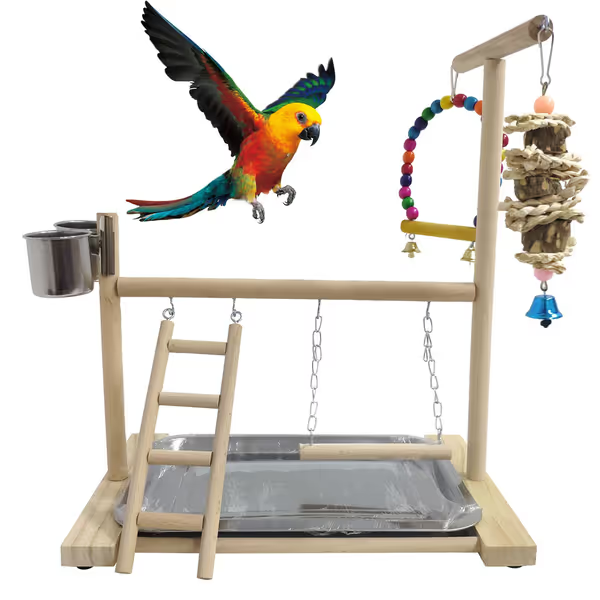
Hamiledyi Bird Playground
"Cheap" vs. "Affordable": What Actually Saves Money Long-Term?
"Cheap cat furniture" often means flimsy particleboard towers, unstable perches, or fabric-covered scratchers that shed fibers. These fail cats and budgets when they collapse, get ignored, or require constant cleaning. True affordability prioritizes feline needs first: materials that withstand scratching, non-toxic finishes, and modular designs. After 12+ years of shelter work, I measure value by years of use, not upfront cost.
The Cost of Cutting Corners:
| "Cheap" Option | Hidden Costs | Durable Alternative |
|---|---|---|
| Cardboard scratcher (under $15) | Replaced monthly; ineffective for stress relief | The Ultimate Scratching Post (sisal-wrapped, 32" tall) |
| Freestanding condo tower | Tips during play; frequent repairs; vet bills from falls | Wall-mounted shelf system (anchored for safety) |
| Fabric-covered perches | Hair traps; constant vacuuming; replacement every 1-2 years | Easy-wipe materials like bamboo or replaceable cushion covers |
Consider Mau Pets' Ivy 3 Cat Tree, its replaceable baskets and industrial-grade sisal mean parts renew, not the whole unit. A $250 investment lasting 7+ years beats replacing $80 towers every 18 months. As one client told me: "My cat uses it like a jungle gym and it looks like art in my living room."
How Do I Choose Furniture for Multiple Cats?
Conflict between cats rarely stems from personality, it's usually insufficient choice in territory. When resources (perches, hiding spots, scratching posts) are scarce, cats compete silently. In multi-cat homes, furniture must offer overlapping access without forced interaction. Think: parallel perches at varying heights, separate scratching zones, and clear visual barriers.
Critical Design Priorities:
- Triple the essentials: Provide 3+ scratching posts, 3+ resting spots, and 2+ retreats per cat
- Stagger vertical levels: Place platforms at 12", 24", and 36" heights so cats can occupy "layers" without crowding
- Anchor escape routes: Ensure continuous pathways (no dead ends) with at least two exit options per perch
A PetPals Royal 3-Level Cat Tree exemplifies this with its dual hammocks and separate condo. Cats claim individual zones yet maintain visual contact, reducing tension through predictable access. Remember: Choice reduces conflict isn't just a phrase; it's the foundation of peaceful multi-cat dynamics.
Why "Modern" Doesn't Mean Sacrificing Function
The best modern cat tree designs reject the "pet furniture" aesthetic altogether. Explore our aesthetic cat furniture showdown for side-by-side picks that balance style and feline function. They integrate feline needs into human-centric forms: a sleek shelf that doubles as a perch, a staircase serving as a scratching post, or a side table with hidden litter access. Success hinges on habit-aware details:
- Scratching integration: Sisal-wrapped legs on tables (like CozyCatFurniture's Large Cat Tower), not standalone posts
- Sensory integration: Textured surfaces (rope, wood grain) that satisfy paw preferences
- Routine-friendly placement: Positioning near feeding zones or human seating areas cats already patrol
Avoid "gimmicks" like dangling toys on unstable towers. Instead, seek pieces that fit your daily patterns, like a wall step near your coffee station where cats greet you from above. When furniture aligns with natural behaviors, cats engage willingly, eliminating the need for correction.
Final Thought: Your Home as a Living Conversation
The most transformative unique cat furniture doesn't just fit your decor, it translates your cat's instincts into spatial dialogue. That shelter cat Miso didn't just climb shelves; he reclaimed agency through strategic choices. Your goal isn't perfection, but progress: observing where your cat pauses, stretches, or retreats, then gently adjusting the environment to honor those cues.
Behavior blossoms when spaces speak your cat's native language.
Start small: anchor one shelf near a window or swap a wobbly tower for a wall-mounted step. Notice the shift when your cat chooses where to be, rather than hiding from unsuitable spaces. For deeper guidance on mapping your home's "feline blueprint," explore our free room assessment toolkit, it walks you through reading your cat's spatial language, room by room. Because when territory offers choice, vantage, and safety? Harmony isn't just possible. It's inevitable.

